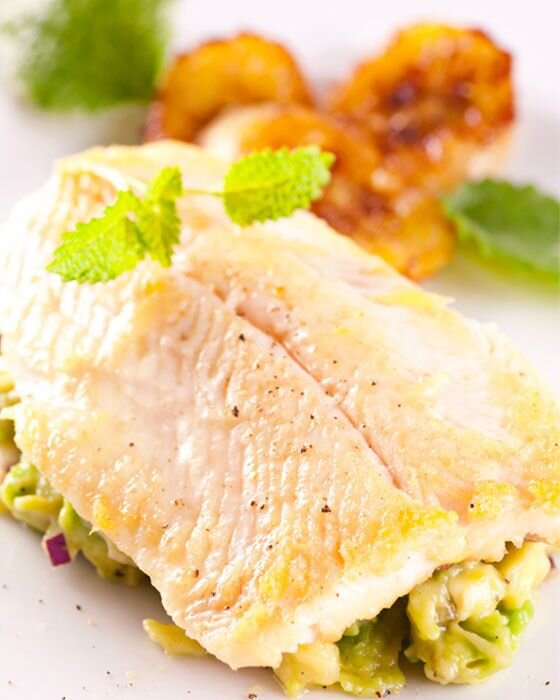Norway Haddock Fillets
Fillets 375g - Prices are fillet per kg
Beautiful, curious and exceptionally good for you. For years, everyone has been praising the haddock – even royalty.
The haddock is easy to recognise, with its two black spots on the neck. It was believed that St. Peter, in a fit of anger, at one point grabbed the haddock around its neck and squeezed it. Others thought it was the devil himself who had left burning marks.
Whether by saint or by Satan, the black spots also leave their marks in the haddock’s name: The Norwegian name for haddock, hyse, is Old Norse for “burned”.
With its snow-white belly, silver-grey sides and violet back, the haddock is a beauty to behold. It is equally beautiful on the inside; the delicate fish meat makes the haddock stand out from other white saltwater fish. A haddock fillet is almost transparent, and when the fillet is cooked it turns shiny, white and firm. As it traditionally wasn’t fished as much as cod and saithe in Norway, it used to be a fish for the big occasions, often served on Boxing day.
Curiosity killed the haddock
The haddock is clever, curious and difficult to catch. It’s far more curious than other fish, always seeking to explore and investigate the unknown. Experienced haddock fishers know how to turn this to their advantage. When using a fishing rod, one trick is to dip the jig in the seabed so that mud is swirled up. While most other fish would be intimidated by this, the haddock can’t help itself and simply has to investigate what’s going on. Getting a haddock on the hook does not mean that a catch is guaranteed – often this virile fish manages to break free.




